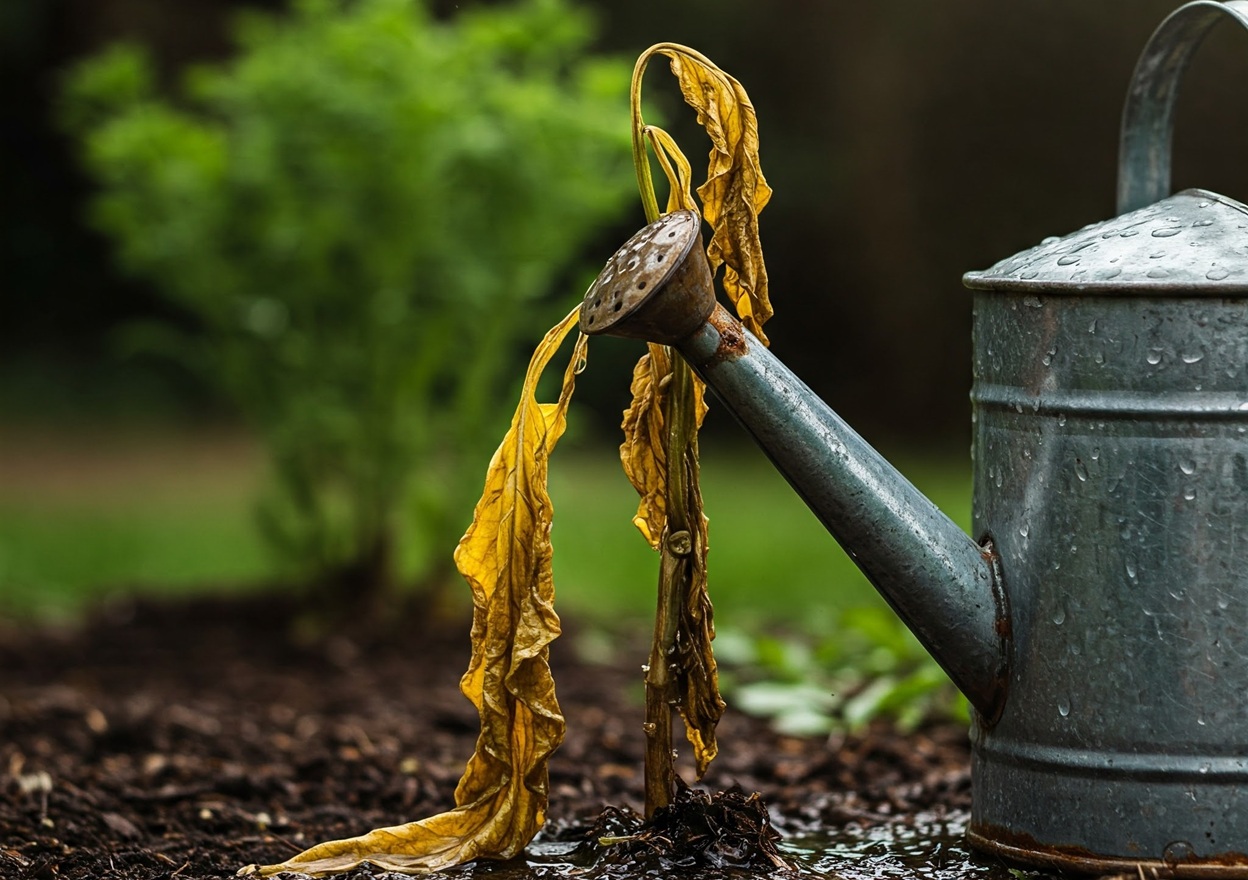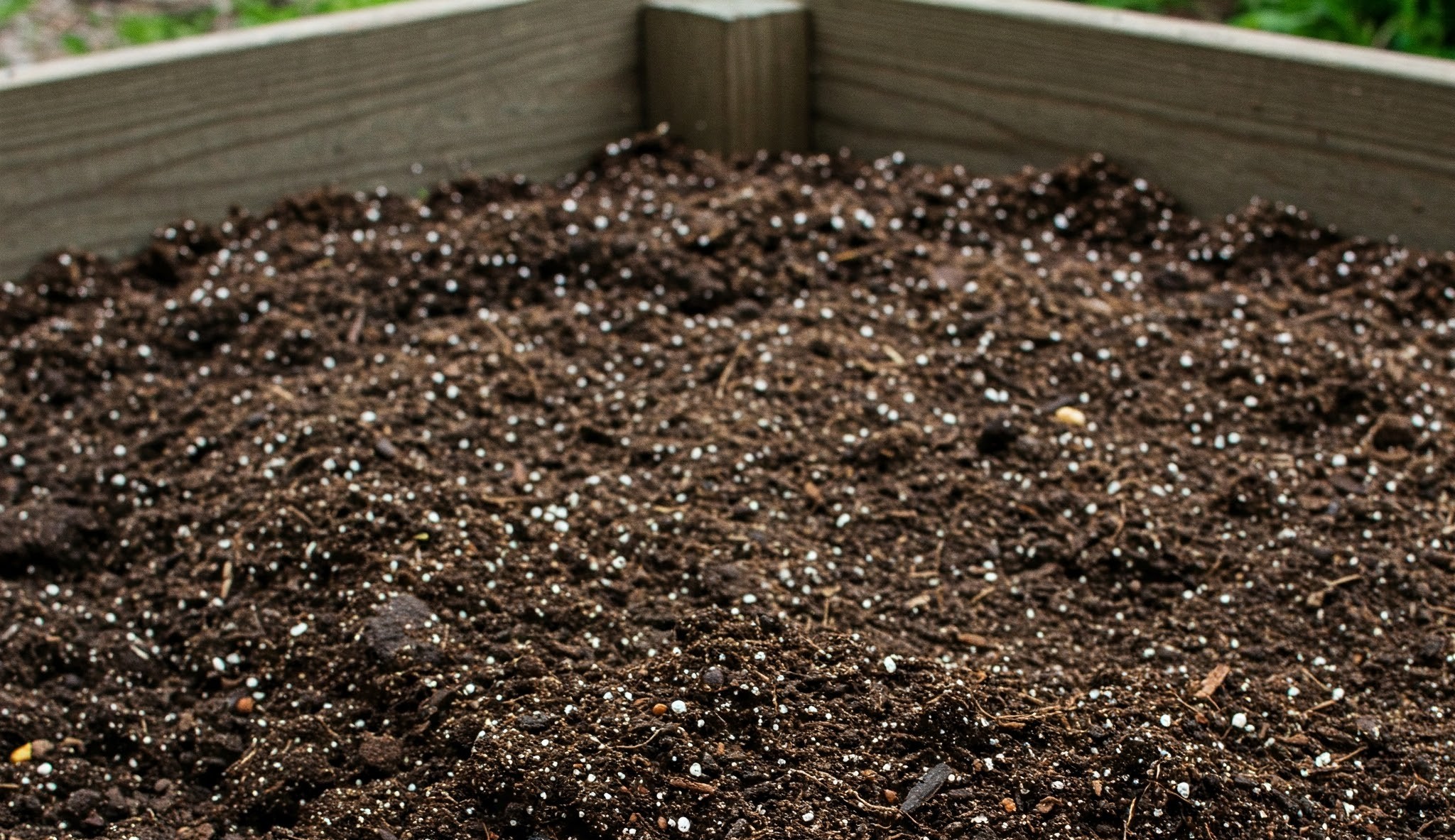A Comprehensive Guide to Over-watering Plant Problems

Over-watering is a common problem for gardeners, whether they are just starting out or have years of experience. Too much water can harm plants in many ways—it can cause root rot, promote fungal growth, and weaken the plant’s health overall. While water is vital for plants, too much of it can drown the roots, stopping them from getting the oxygen they need. This makes plants more prone to diseases and can even kill them if not addressed.
This guide will help you spot the signs of over-watering and take steps to fix the problem. With expert tips and practical advice, you’ll learn how to keep your plants healthy and thriving by managing water levels effectively.
The Physiological Basis of Plant Hydration
Plants need water to grow and live, but their needs can change depending on the climate, soil type, and species.
How Climate Affects Plants
Climate has a significant impact on how much water plants need, as it directly influences the rate at which they lose water. In hot and dry environments, plants tend to lose more moisture through tiny openings on their leaves called stomata, requiring more frequent watering to stay hydrated. On the other hand, in cooler and more humid climates, plants experience reduced water loss, meaning they need less watering. Understanding this relationship between weather and plant hydration is crucial for maintaining healthy growth and avoiding over-watering or dehydration.
How Soil Type Matters
Soil type plays a crucial role in how water is retained and drained, directly impacting how often plants need to be watered. Sandy soil, with its large particles, allows water to drain quickly, meaning plants in this type of soil require more frequent watering to stay hydrated. On the other hand, clay soil has fine particles that hold onto water for longer periods, reducing the need for frequent watering but increasing the risk of over-saturating the roots if not monitored carefully. Understanding your soil type helps ensure proper watering practices for healthy plant growth.
Plant Adaptations
Plants have evolved unique ways to manage water based on their natural habitats. For instance, cacti are adapted to dry environments by storing water in their thick leaves and having fewer stomata, allowing them to thrive with minimal watering. In contrast, ferns flourish in damp conditions and need consistent watering to support their growth.
| Plant Type | Water Requirements |
|---|---|
| Houseplants | Water sparingly, allowing the soil to dry slightly between waterings |
| Outdoor plants | Water regularly, taking into account weather conditions and soil type |
The Impact of Excess Water on Plant Health
Giving plants too much water can be just as harmful as not giving them enough. When plants receive excess water, their roots can become waterlogged and deprived of oxygen, leading to root rot and other diseases. This also prevents the roots from absorbing essential nutrients properly, causing the plant to weaken and wilt. It’s important to find the right balance to keep your plants healthy and happy.
What is Over-watering
Over-watering happens when plants get too much water, more than they can handle. This can cause their roots to stay wet for too long, which leads to problems like root rot and prevents the plant from absorbing nutrients properly. As a result, the plant can become weak, wilted, and even die. It’s important to water plants just the right amount they need to stay healthy.
What Causes Over-watering
Over-watering is often caused by giving plants more water than they need. Here are a few common reasons this happens:
- Frequent Watering: Watering plants too often without checking if the soil is dry can lead to over-watering.
- Poor Drainage: Using pots without drainage holes or planting in soil that doesn’t drain well can trap water around the roots.
- Misjudging Needs: Not all plants have the same water needs. Watering all plants the same way can result in some getting too much water.
- Climate Factors: In cooler or less sunny conditions, plants need less water as the soil dries out more slowly.
Signs Your Plants Are Over-watered

Over-watered plants can show a variety of signs that indicate they’re getting too much water. Here are some common ones to watch out for:
- Yellowing Leaves: When leaves turn yellow and start to drop, it can be a sign of over-watering.
- Wilting: Oddly enough, over-watered plants can wilt because their roots are suffocated by too much water.
- Soft, Mushy Stems: Excess water can cause the stems to become soft and mushy.
- Root Rot: The roots may become brown or black and mushy, which is a sign of root rot.
- Fungus Gnats: These small, flying insects are attracted to the damp soil of over-watered plants.
- Droopy Leaves: When plants receive too much water, their roots can become waterlogged and struggle to take in oxygen. This causes the plant to lose its ability to stand upright, leading to droopy leaves.
- Leaf Drop: Over-watering can cause the roots to rot and disrupt the plant’s nutrient uptake. As a result, leaves may turn yellow, become weak, and eventually fall off.
How Different Plants React to Over-watering
Different plants have varied reactions to over-watering, depending on their natural habitat and water needs. Here’s a quick look at how some common types react:
- Succulents and Cacti: These desert plants are highly sensitive to excess water. Over-watering can cause them to become soft, and mushy, and lead to rapid root rot.
- Tropical Plants (e.g., Ferns): These plants love moisture but still need well-draining soil. Over-watering can result in yellowing leaves, leaf drops, and mold growth on the soil surface.
- Herbaceous Plants (e.g., Basil, Mint): These plants can tolerate slightly more water but will suffer from root rot, wilting, and leaf yellowing if consistently over-watered.
- Woody Plants (e.g., Shrubs, Trees): These plants can often tolerate more fluctuations in water but prolonged over-watering can still lead to root rot, leaf drop, and fungal diseases.
Prevention Strategies for Over-watering Plants
To prevent over-watering your plants and keep them healthy, here are some effective strategies:
- Check Soil Moisture: Before watering, feel the soil about an inch below the surface. If it’s still damp, wait a bit longer.
- Use Well-Draining Soil: Ensure your plants are in soil that drains well to prevent water from pooling around the roots.
- Proper Pot Selection: Choose pots with drainage holes to allow excess water to escape.
- Watering Schedule: Adjust your watering routine based on the plant’s needs, climate, and soil type. Less is often more!
- Plant Grouping: Place plants with similar water needs together. This way, you can water them all appropriately.
- Weather Consideration: Be mindful of weather conditions. Reduce watering during rainy or cooler periods.
Over-watering Pants Solutions
Recovering over-watered plants takes some careful steps, but it can certainly be done! Here’s what you can do:
Stop Watering
When a plant receives too much water, its roots can become waterlogged and struggle to get enough oxygen, leading to symptoms like yellowing leaves, wilting, and root rot. By halting any additional watering, you allow the soil to dry out, giving the plant a chance to recover and regain its balance. This helps prevent further damage to the roots and provides the plant with the opportunity to heal and regain its health. Once the soil has dried out, you can resume watering, but be sure to do so more cautiously, only when the top inch of soil feels dry.
Check Drainage
When you check the drainage of your plant’s pot, you want to make sure there are holes at the bottom to allow excess water to escape. If the water stays in the pot, it can lead to waterlogged soil and root rot.
If your current pot doesn’t have drainage holes, it’s important to repot the plant into a container that does. You can use pots made of plastic, clay, or other materials, but the key is to have several holes at the bottom. You might also add a layer of gravel or small stones at the base of the pot before adding soil to improve drainage. By ensuring good drainage, you help prevent overwatering and promote healthier root systems for your plants.
Remove Damaged Parts
When you trim away yellowed, wilted, or mushy leaves and stems, you’re helping the plant in several ways. Damaged parts are more prone to infections and can drain the plant’s energy as it tries to heal them. By removing these unhealthy sections, you allow the plant to redirect its energy and resources towards new, healthy growth. This can also improve air circulation around the plant, reducing the risk of mold and mildew. Use clean, sharp scissors or pruning shears to make clean cuts, and discard the removed parts away from other plants to prevent the spread of any potential diseases. This proactive step can significantly boost the plant’s chances of recovery and ensure it returns to a healthy state.
Air Out the Roots
Airing out the roots is an effective method to help an overwatered plant recover. When a plant is overwatered, its roots can become waterlogged and oxygen-deprived, leading to root rot and other health issues. By gently removing the plant from its pot and allowing the roots to air out for a few hours to a day, you enable excess moisture to evaporate. This drying process can help to restore the roots’ ability to absorb oxygen and nutrients more effectively. It’s essential to handle the plant carefully during this process to avoid damaging the roots. Once the roots have had a chance to dry out, repot the plant in fresh, well-draining soil, and ensure the pot has proper drainage holes to prevent future overwatering. This step can significantly improve the plant’s chances of recovery and promote healthy growth.
Replace the Soil
When you change the soil to a fresh, well-draining mix, you provide a better environment for the plant’s roots. Overwatered soil can become compacted and retain too much moisture, depriving roots of oxygen and leading to root rot. By repotting the plant with new, well-draining soil, such as a mix containing perlite, peat moss, and compost, you improve aeration and water flow around the roots. This helps prevent waterlogging and allows the roots to access the necessary oxygen and nutrients more effectively. Make sure the new pot has proper drainage holes to further support healthy root development. This step can significantly boost the plant’s recovery and promote strong, healthy growth.
Moderate Environment
Placing the plant in a warm, dry location with good air circulation helps the soil and roots dry out more quickly, preventing further waterlogging. However, it’s important to avoid direct sunlight during this period, as the plant is already stressed, and intense sunlight can cause additional harm. By providing a stable, warm environment with gentle air movement, you allow the plant to regain its strength and focus on new, healthy growth. Once the plant shows signs of recovery, such as new leaves or improved firmness in its stems, you can gradually reintroduce it to more direct sunlight.
Essential Tools for Proper Watering
Ensuring your plants get the right amount of water can be much easier with the help of some essential tools. Here are a few that can make your plant care routine more effective:
- Moisture Meter: Measures soil moisture at the root level, helping you know when your plants need water.
- Watering Can with a Long Spout: Allows you to reach the soil directly without wetting the leaves.
- Drip Irrigation System: Provides a slow and steady supply of water to the plant’s roots, perfect for both indoor and outdoor gardens.
- Self-Watering Pots: Have built-in reservoirs that ensure your plants get water as needed, reducing the risk of over-watering.
- Spray Bottle: Useful for misting plants that prefer higher humidity, like tropical plants.
- Mulch: Helps retain soil moisture and keeps the roots cool, reducing the need for frequent watering.
Over-watering Tomato Plants

Overwatering tomato plants can lead to several problems, but there are ways to fix and prevent it:
- Symptoms: Look for yellowing leaves, wilting, and cracks on the fruit. The soil might feel consistently wet and compacted.
- Stop Watering: Allow the soil to dry out before watering again.
- Check Drainage: Ensure your pots or garden bed have good drainage. Add perlite or sand to the soil to improve aeration.
- Mulch: Use mulch to regulate moisture levels and prevent the soil from staying too wet.
- Watering Schedule: Water deeply but less frequently. Aim to water in the morning so the plant has time to dry out during the day.
- Monitor Weather: Adjust your watering schedule based on rainfall and humidity levels.
Over-watering Grass

Overwatering grass can cause several issues, but here’s how to address and prevent it:
- Symptoms: Look for yellowing grass, fungal growth, and a spongy feel underfoot. The soil may also be soggy.
- Reduce Watering: Cut back on how often you water the lawn. Grass generally needs about 1 inch of water per week, including rainfall.
- Improve Drainage: Aerate the soil to enhance drainage and allow water to penetrate deeper into the ground.
- Watering Schedule: Water early in the morning to reduce evaporation and ensure the grass has time to dry out during the day.
- Check Soil Moisture: Use a soil moisture meter to monitor the water levels and adjust accordingly.
Seasonal Adjustments to Watering Schedules
Adjusting your watering schedule based on the seasons is crucial to keeping your plants healthy. Here’s a brief guide to help you through the year:
Spring: Plants start to wake up and grow more actively. Increase watering gradually as temperatures rise.
Summer: The heat and increased sunlight mean plants need more water. Water more frequently, and consider watering in the early morning or evening to reduce evaporation.
Autumn: As temperatures cool and days shorten, plants require less water. Start reducing the frequency and amount of water gradually.
Winter: Many plants go dormant in winter and need much less water. Over-watering can be a risk, so water sparingly and only when the soil is dry.
How to tell if a plant is overwatered or underwatered
Overwatered: When a plant receives more water than it needs, causing the soil to stay wet for too long. This can lead to problems like root rot, yellowing leaves, wilting, and mushy stems, as the plant’s roots struggle to get enough oxygen.
Overwatered Plants:
- Yellowing Leaves: Leaves may turn yellow and drop off.
- Wilting: Despite the soil being wet, the plant may wilt because the roots are suffocated.
- Mushy Stems: Stems may become soft and mushy.
- Root Rot: Roots may appear brown or black and mushy.
- Fungus Gnats: Small flies hovering around the plant can indicate overwatering.
Underwatered: When a plant doesn’t get enough water, causing the soil to become too dry. This can result in dry, crispy leaves, drooping, and slow or stunted growth, as the plant struggles to get the moisture it needs to survive.
Underwatered Plants:
- Dry, Crispy Leaves: Leaves may become dry, and crispy, and start to brown at the edges.
- Wilting: The plant may wilt due to lack of water.
- Slow Growth: The plant may grow more slowly or stop growing altogether.
- Drooping: The whole plant may appear droopy and lifeless.
- Light Soil: The soil may feel dry and lighter than usual.
Understanding the difference between over-watering and under-watering can help provide the right care for your plants.
| Factor | Over-Watering | Under-Watering |
|---|---|---|
| Soil Condition | Wet and soggy | Dry and cracked |
| Leaf Color | Yellowing leaves | Brown and crispy edges |
| Root Health | Mushy, rotting roots | Dry, brittle roots |
| Plant Growth | Stunted or slow growth | Wilting and drooping |
| Common Signs | Fungus, mold, and odor in soil | Leaves curling or falling off |
FAQ
How do you fix an overwatered plant?
To fix an overwatered plant, first stop watering it and let the soil dry out a bit. Check that your pot has proper drainage holes so excess water can escape. Remove any yellow or mushy leaves to help the plant focus on new growth. If possible, gently take the plant out of its pot and let the roots air out for a few hours. You might also want to replace the old soil with fresh, well-draining soil. Place the plant in a warm spot with good air circulation to help it recover.
How do you know if you’re overwatering?
You might be overwatering your plant if you notice certain signs. Look out for yellowing leaves that start to drop, soft or mushy stems, and the plant wilting even though the soil is wet. You might also see small flies, called fungus gnats, hovering around the plant, as they are attracted to the damp soil. These signs indicate that your plant is getting too much water.
What are the effects of overwatering?
Overwatering can cause several problems for plants. When plants get too much water, their roots can’t get enough oxygen, leading to root rot. This makes the roots brown or black and mushy. Overwatered plants may also show signs like yellowing leaves, wilting, and soft stems. In the end, too much water can weaken the plant and even kill it if not corrected
How can too much water be fixed in a plant?
To fix a plant with too much water, start by stopping any further watering and let the soil dry out a bit. Make sure the pot has drainage holes so excess water can escape. You can also gently take the plant out of its pot to let the roots air out for a few hours. Trim any yellow or mushy leaves to help the plant focus on healthy growth. Consider replacing the old soil with fresh, well-draining soil. Place the plant in a warm spot with good air circulation to help it recover.
Can overwatered plants recover on their own?
Overwatered plants can sometimes recover on their own, but they need the right care. Stop watering them for a while and let the soil dry out. Make sure the pot has good drainage to allow excess water to escape. Trim any yellow or mushy leaves to help the plant focus on healthy growth. With some patience and care, many overwatered plants can bounce back to health.
How to dry out overwatered soil?
To dry out overwatered soil, first stop watering the plant and let the soil naturally dry out over time. Ensure the pot has drainage holes so that any excess water can escape. You can also gently remove the plant from the pot to let the roots air out for a few hours. Adding some fresh, well-draining soil can help absorb extra moisture. Placing the plant in a warm spot with good air circulation can also speed up the drying process.
What does overwatering look like?
Overwatering looks like yellow leaves that may fall off, soft and mushy stems, and plants that wilt even though the soil is wet. You might also notice small flies, called fungus gnats, around the plant. These signs show that the plant is getting too much water and struggling to stay healthy.
What are the signs of root rot?
Root rot shows up as roots that are brown or black, mushy, and sometimes have a bad smell. The plant’s leaves may also turn yellow, wilt, and fall off. These signs indicate that the plant’s roots are not healthy and are rotting due to too much water.
Conclusion
Although watering plants is essential, too much of it can do more harm than good. Knowing when to stop watering and using the right tools helps. Also, changing your watering schedule with the seasons ensures your plants get just the right amount of water.
Recommended Gardening Tools for Proper Watering
- Moisture Meter – Check on Amazon
- Self-Watering Pots – Check on Amazon
- Well-Draining Potting Mix – Check on Amazon
- Watering Can with Measurement – Check on Amazon

I’m John Doe, a Certified Master Gardener with over 20 years of hands-on experience in cultivating healthy and vibrant gardens. My expertise spans organic gardening, soil science, and sustainable pest control. I’ve worked extensively with community gardens and have a deep passion for sharing my knowledge to help others succeed in their gardening endeavors.






